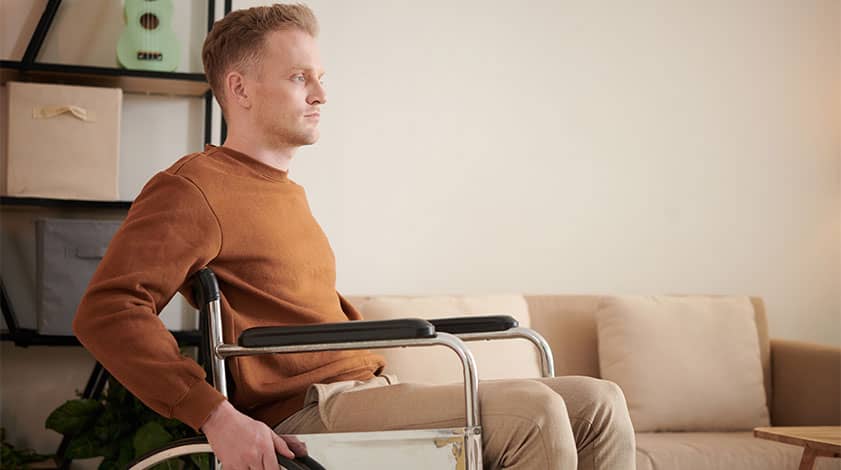Welcome to the Topic “Moving with a Disability: Accessibility Considerations and Supportive Services”
Moving to a new home is an exciting adventure, but it can be more complex for individuals with disabilities. In this article, we will delve into the key considerations and supportive services that can greatly assist you in making your move a seamless and accessible experience.
Planning for Accessibility
When it comes to moving with a disability, careful planning is essential. Here are some factors to consider:
1. Housing Accessibility
Research and identify accessible housing options that cater to your specific needs. Look for features such as:
- Wheelchair ramps or lifts for easy entry and exit.
- Wide doorways and hallways to accommodate mobility aids.
- Accessible bathrooms with grab bars, roll-in showers, and raised toilets.
2. Location Accessibility
Evaluate the accessibility of the neighborhood and nearby amenities, such as:
- Accessible public transportation options for convenient travel.
- Proximity to medical facilities, pharmacies, and emergency services.
- Accessible recreational spaces or parks for leisure activities.
3. Packing and Organization
Develop a systematic plan to ensure a smooth transition:
- Prioritize essential items and pack them separately for easy access.
- Label boxes clearly, using large, visible fonts or color-coded tags.
- Create an inventory to track your belongings and minimize stress during unpacking.
Utilizing Supportive Services
Numerous supportive services are available to help individuals with disabilities during the moving process. Consider these options:
1. Disability Advocacy Organizations
Reach out to local disability advocacy organizations for guidance and resources:
- They can provide valuable advice based on their experience assisting individuals with disabilities.
- These organizations can connect you with others who have gone through similar moves, offering a supportive network.
2. Professional Movers
Hire professional movers experienced in handling moves for individuals with disabilities:
- They can provide specialized equipment, such as wheelchair lifts, to ensure a safe and efficient relocation.
- Inform them about your accessibility requirements and any delicate or valuable assistive devices.
3. Personal Care Attendants
Arrange for personal care attendants to assist you during the moving process:
- Personal care attendants can provide support with daily activities, ensuring your safety and comfort throughout the move.
- They can help navigate accessibility challenges and ensure your needs are met.
Accessibility Modifications
Make necessary modifications to your new home to enhance accessibility:
1. Wheelchair Accessibility
Ensure your new home accommodates wheelchair access:
- Widening doorways, hallways, and entryways to allow for easy passage.
- Installing ramps or lifts where necessary.
- Removing physical barriers that impede mobility.
2. Bathroom Modifications
Adapt bathrooms to be wheelchair-friendly:
- Install grab bars for stability and support.
- Consider raised toilet seats and roll-in showers for convenience.
- Ensure sinks are at a suitable height, with knee space underneath.
3. Lighting and Safety
Prioritize lighting and safety measures in your new home:
- Ensure adequate lighting in all areas, including entrances, hallways, and staircases.
- Install handrails along staircases and non-slip flooring to prevent accidents.
Notification and Coordination
Notify essential parties to ensure a smooth transition:
1. Healthcare Providers
Inform your doctors, therapists, and healthcare professionals about your move:
- Arrange for the transfer of medical records and prescriptions to ensure continuity of care.
- Seek recommendations for healthcare providers in your new location if necessary.
2. Service Providers
Notify utility companies, internet service providers, and other essential service providers:
- Inform them of your move to ensure uninterrupted services in your new home.
- Discuss any accessibility requirements or accommodations you may need.
3. Social Security Administration and Insurance Providers
Update your address with the Social Security Administration and notify insurance providers:
- Ensure a seamless transition of benefits and coverage without any disruptions.
FAQs
Q: How can I find accessible housing options in my desired location?
A: You can find accessible housing options by researching online platforms specializing in accessible housing, contacting local disability advocacy organizations for recommendations, reaching out to real estate agents experienced in working with individuals with disabilities, and attending accessible housing expos or events.
Q: Are there financial assistance programs available to help with the costs of accessibility modifications during a move?
A: Yes, there are financial assistance programs available, such as home modification grants, Medicaid waivers, Veterans Affairs (VA) grants for veterans with disabilities, and local community-based organizations that offer financial aid for accessibility modifications.
Q: How can I ensure a smooth transition of my healthcare services to my new location?
A: To ensure continuity of care, notify your healthcare providers about your move in advance, provide them with your new address, request copies of your medical records and prescriptions to transfer to new healthcare providers, and research and schedule appointments with new healthcare providers in your new area.
Q: Are there accessible transportation services available to assist with the moving process?
A: Yes, accessible transportation services can help during a move. Options include accessible taxi services with ramps or lifts, non-emergency medical transportation services for individuals with disabilities, public transportation systems with accessible buses, trains, or paratransit services, and private transportation services specializing in serving individuals with disabilities.
Q: How can I make the moving process less overwhelming for myself or a loved one with a disability?
A: To reduce stress, start planning and preparing well in advance, create a checklist or timeline to stay organized, seek assistance from friends, family, or professional movers, take breaks and prioritize self-care, and stay connected with support networks like disability advocacy organizations for guidance and emotional support.
Conclusion
Moving with a disability requires thorough planning and consideration of accessibility needs. By addressing housing and location accessibility, utilizing supportive services, making necessary modifications, and coordinating with essential parties, you can have a successful and smooth transition to your new home. Remember, there are resources available to assist you throughout the process, so don’t hesitate to seek guidance from disability advocacy organizations. Happy moving!
Also Read: The don’ts of moving houses: Mistakes to avoid when moving


